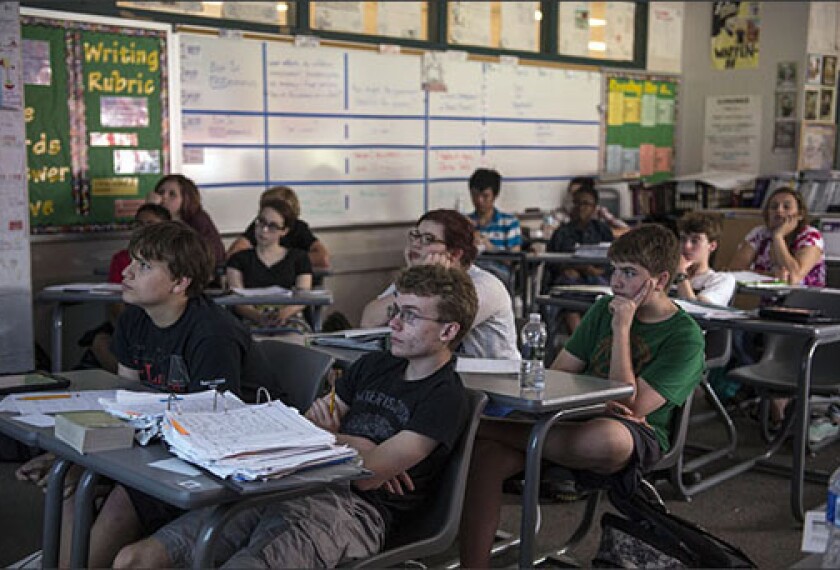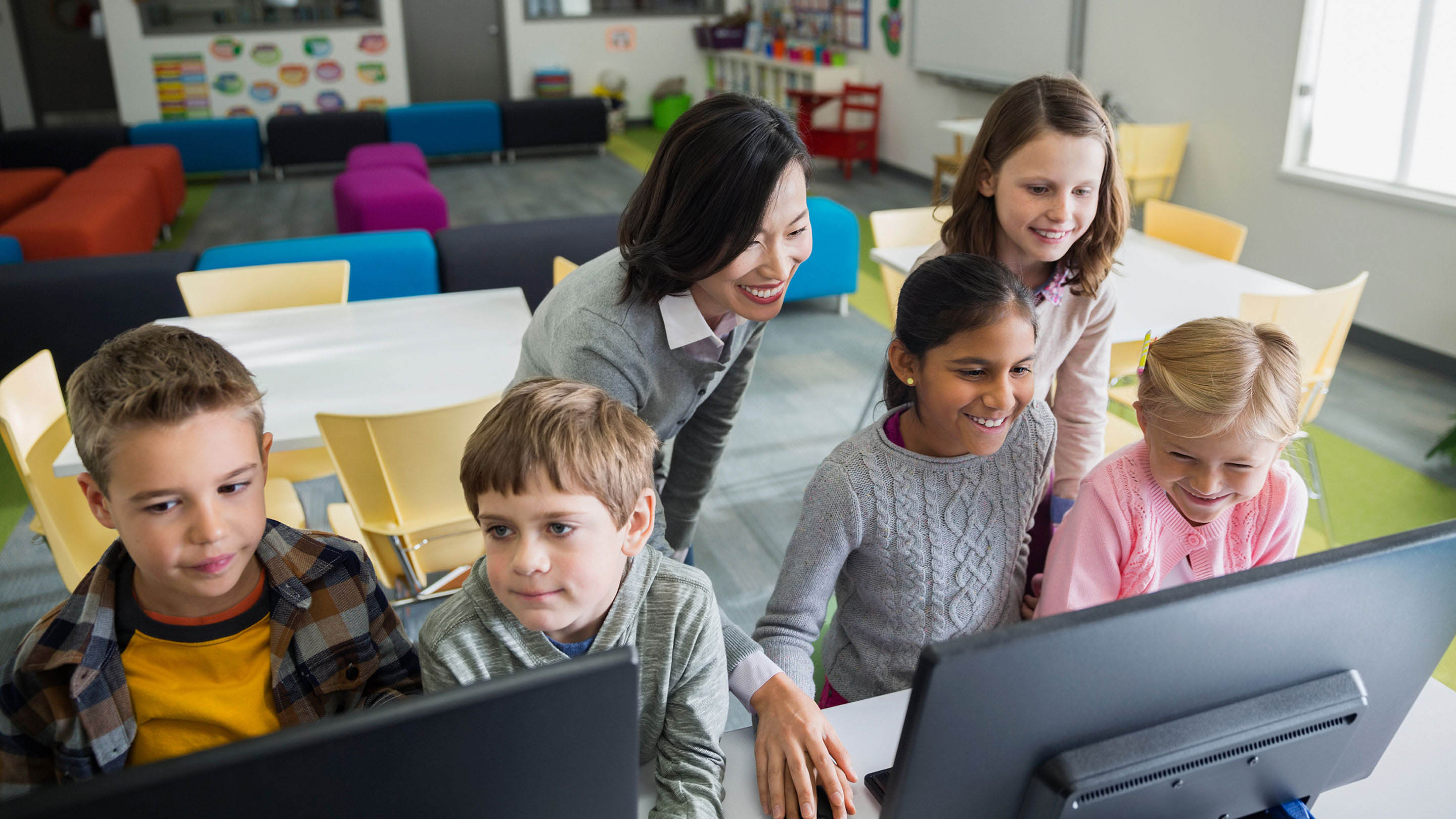Hello!
 Classrooms have come a long way from the chalkboards of yesteryear. Even millennials might feel out of place in a modern classroom where everyone has a tablet and smartboards are considered quaint. EdTech has helped revolutionize the way children are taught, but for adults who are out of the loop, it can be difficult to know what’s current.
Classrooms have come a long way from the chalkboards of yesteryear. Even millennials might feel out of place in a modern classroom where everyone has a tablet and smartboards are considered quaint. EdTech has helped revolutionize the way children are taught, but for adults who are out of the loop, it can be difficult to know what’s current.
In this article, we take a look at how EdTech helps teachers reach students across the world.
What is EdTech?
EdTech refers to the digital technology that helps teachers instruct their students. In other words, software programs that do everything from collecting data to managing communications. Teachers have been using technology in the classroom since the invention of the chalkboard, but the resources are more robust and impressive than ever, improving outcomes and boosting student engagement.
We have assembled several benefits of EdTech below, but it’s important to keep in mind that the list changes and grows daily, just as digital technology does.
More Parental Involvement
 One of the unique features of educational technology is that it makes it easier than ever for parents to take an active role in their child’s education. For example, most modern educational tech stacks allow for features that make it possible for parents to communicate effortlessly with their kid’s teachers around the clock.
One of the unique features of educational technology is that it makes it easier than ever for parents to take an active role in their child’s education. For example, most modern educational tech stacks allow for features that make it possible for parents to communicate effortlessly with their kid’s teachers around the clock.
They might also include device monitoring — letting parents see a very clear breakdown of how their kid is using their time on devices. How long does it take for them to complete assignments on tablets or computers? Are they able to work all the way through, or are they prone to distractions?
On an even simpler level, EdtTech will often include hubs where parents can view everything that is going on in the classroom — things ranging from assignments to classroom events.
Of course, it’s not a perfect system. Parents who are tech-savvy will enjoy this level of access. However, those who lack access to digital technology — either due to their means, or their background — may feel more isolated than they otherwise would have.
Teachers can help alleviate this divide by providing parents with a variety of different ways to remain involved.
Learning Anytime, Anywhere
 Naturally, most of the world has already learned, and learned very thoroughly, that technology can be used to turn any room into a school. This was very valuable during the early months of the pandemic when viral surges forced people to stay indoors.
Naturally, most of the world has already learned, and learned very thoroughly, that technology can be used to turn any room into a school. This was very valuable during the early months of the pandemic when viral surges forced people to stay indoors.
Covid-19 isn’t closing schools anymore, but there are many reasons that remote learning can still become necessary. For example, many schools will place classrooms in remote learning when one student has tested positive for Covid.
Still, others are using remote learning days in place of snow days — much to the chagrin of the student body.
Of course, it’s not a perfect system—many students missed enormous amounts of school during the pandemic. In households where both parents work, it was difficult to make sure kids were getting on when they were supposed to.
Nevertheless, some school is better than none at all.
Data
 One of the hallmarks of any technological adoption is that it tends to catalog and process enormous quantities of data. Such is the case with educational technology. The more work students do on their devices, the more numbers they will ultimately produce.
One of the hallmarks of any technological adoption is that it tends to catalog and process enormous quantities of data. Such is the case with educational technology. The more work students do on their devices, the more numbers they will ultimately produce.
This includes information on basic things like grades, but it can be taken further as well, providing granular insights on equivalency levels for a wide range of different academic skills.
The more teachers know about what a student is good at and what they are struggling with, the better equipped they will ultimately be to provide them with a good education.
A Potential Downside?
Of course, nothing is without consequence, and this is true of educational technology. While using EdTech the right way can produce great results for students, avoiding excess is key. Keep in mind that kids, no matter the context, are only supposed to have about two hours of screen time a day.
Any more than that, and the negative outcomes can be quite significant — depression, anxiety, weight gain, and even addiction to digital technology.
 Of course, schools aren’t responsible for what students do at home. Many of them probably are already far in excess of the recommended two hours of screen time and will remain so even if digital technology vanished entirely from the curriculum.
Of course, schools aren’t responsible for what students do at home. Many of them probably are already far in excess of the recommended two hours of screen time and will remain so even if digital technology vanished entirely from the curriculum.
Nevertheless, educators can improve the situation by promoting balanced lesson plans that utilize physical resources, books, papers, pens, and pencils, in addition to digital tech.
Access is the other issue. We touched already on the concept of the “digital divide” in the context of how it might alienate parents. However, the same can easily apply to students as well. They probably understand the technology, and thanks to the school system they most likely have the device as well.
That doesn’t necessarily mean they have the means to utilize digital technology at home. They might lack access to wifi. Or perhaps their parents aren’t able to help them.
Whatever the case, it’s important to be sensitive to the fact that everyone’s situation is different. Curriculums should be planned to maximize success for all students, regardless of their means.
Thank you!
Join us on social media!
See you!






